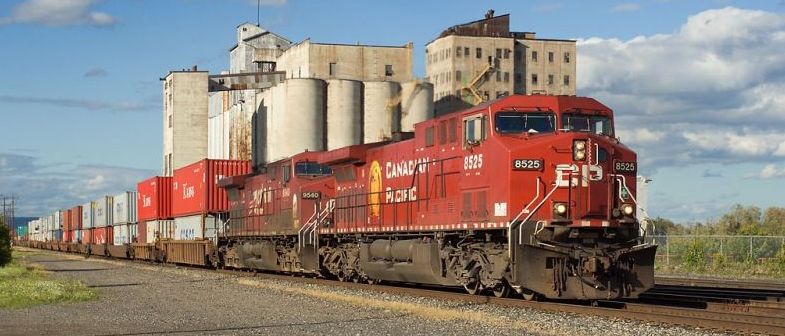
Train Addiction Help Line: 1.866.840.7777
Apr 7, 2020 - Z Scale
Sanchem - The No-Ox-ID "A Special" for Model Railroad Tracks
Sanchem - NO-OX-ID
NO-OX-ID "A-SPECIAL Electrical Grade" is the electrical contact grease of choice... NO-OX-ID electrical contact lubricant ... is an electrically conductive grease that keeps metals free from rust and corrosion -- especially between dissimilar metals (engine wheels and track) that can be rapidly compromised in the presence of oxygen, water, salts, pollutants, and other oxidizing agents. NO-OX-ID electrical contact grease has been used in the power industry for over 65 years to prevent corrosion in electrical connectors from low micro-power electronics to high voltage switchgear. NO-OX-ID A-Special is RoHS compliant! This product is also used as a battery terminal grease.

It takes only a tiny bit - like a light touch of hair oil or gel.
The ideal amount of NO-OX-ID to use is one molecule thick. No gobs. If a person takes care to wipe off excess with a clean paper towel, the residue, barely seen even, is plenty enough to forestall corrosion.
NO-OX-ID "A-Special" prevents the reformation of oxide films, which cause high resistance and subsequent failures.
Below are a few comments and praises. Many more are available if you need more ammunition for a train club or friends.
Model Railroads
Model Railroad Tracks: Gary is a Model Railroad Train enthusiast: "I applied the NO-OX-ID to my layout 4 years ago, and have experienced skip free running ever since. This is even after periods of no running for as long as a month. I HAVE NOT CLEANED MY TRACK IN 4 YEARS! An added bonus is that the NO-OX-ID has changed my loco wheels into better conductors, as I have not had to clean them either. "
This is Gary's application method for NO-OX-ID “A SPECIAL” for Model Railroad Tracks. NO-OX-ID’s corrosion inhibitor system prevents the formation of oxides. Typical greases can not use this inhibitor system because it would break down the greases gel formation. The product is not an oxidant. NO-OX-ID penetrates into the metal surface of the rail.
If you have gunked up your track with plaster, glue, or oil, you should remove any of these contaminants prior to NO-OX-ID application. The method of applying NO-OX-ID to rails is as follows:
1. Use a mild abrasive such as fine sandpaper or a brite boy on all rails to remove any oxidation.
2. Wipe all rails with a rag and alcohol to remove any dirt and fine particles.
3. Vacuum all rails to ensure cleanliness.
4. Put very thin smears (of NO-OX-ID) on your finger and rub it on your rails. The total amount of NO-OX-ID "A SPECIAL” that should be applied to 500 ft of N scale track is about ¼ teaspoon.
5. Run all your locomotives (no rolling stock yet) over your entire track. You may notice some wheel slippage, but this ensures that all wheels get treated with NO-OX-ID
6. Remove all locomotives from track and wipe all rails with a clean rag to remove any excess product. Don’t scrub, just -
7. Wait 24 hours.
8. Run trains and forget about cleaning your track except for occasional light vacuuming.
If you still have a slippage problem, you may have too much on loco wheels. Clean off excess with a clean rag or Q-tip.
____________________________________________
One More Comment:
NO-OX-ID works in a different manner than a track "cleaner". Instead of cleaning, it combines with the copper surface to create an oxide that has a much lower resistance than normal copper oxide. The goop has to be applied in an oh-so-thin coating on track or else there is a great loss of traction. As Gary stated, once applied the coating lasts literally years. If applied to previously cleaned rails, rail cleaning can be reduced to wiping the dust off the rails....
BUT I have found a very very neat other use for It. The product is produced for coating contact surfaces, and the hinge joints between turnout points and the diverging rails and the contact attached to the throwbar of Peco turnouts that mates with the stock rails ARE contact points !!!! Folks this stuff is most excellent in that use. I had a couple of turnouts that were "balky" with intermittent contact in the middle of the yard switching lead. NO MORE! This is not a new product, it’s been out so long that the MR review for it was written by Linn Wescott! But the additional use in turnouts makes this worth mentioning again. RWC
NO-OX-ID has been preventing corrosion since 1918.
You need NO-OX-ID!
_______________________________________________________________
In Memory of Ed, who loved his old engines and was ecstatic when No-OX-ID made them climb steep grades without slipping!
___________________________________________________________

Product Details

|

|
Sanchem, Inc. - All - NO-OX-ID "A-Special" - Lubricant (track cleaner and preserver) Anti-oxidant, Improves Pick-Up (8 oz tube) 444-1000 |
$28.00 |

|